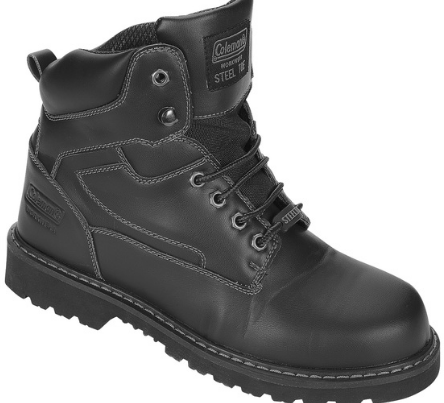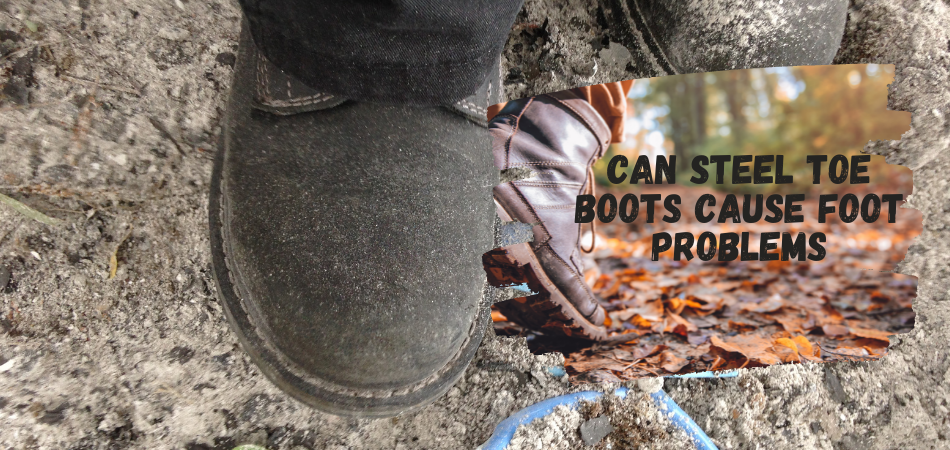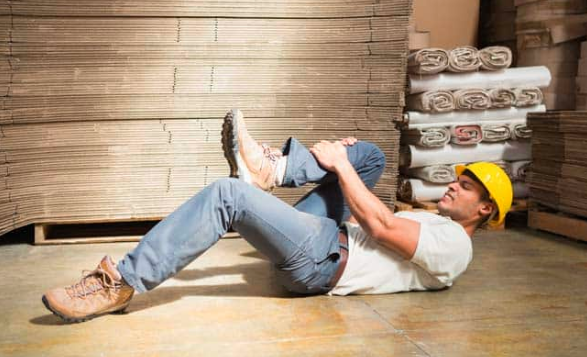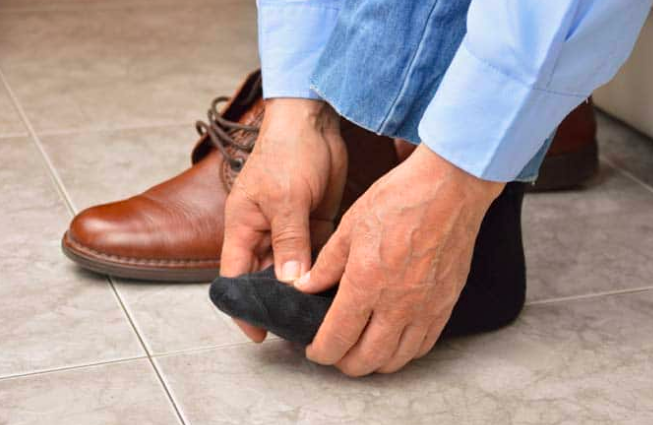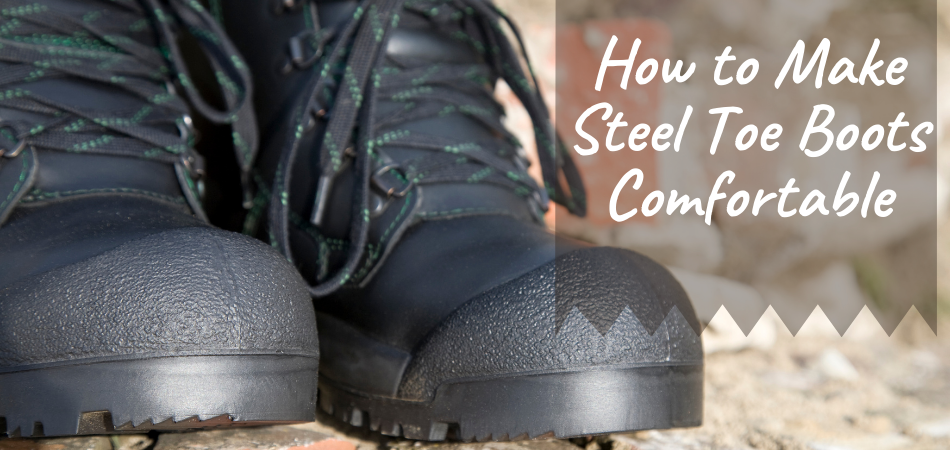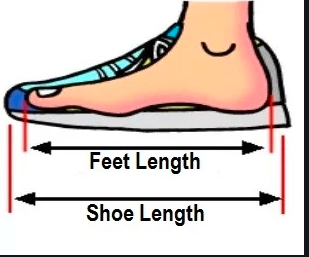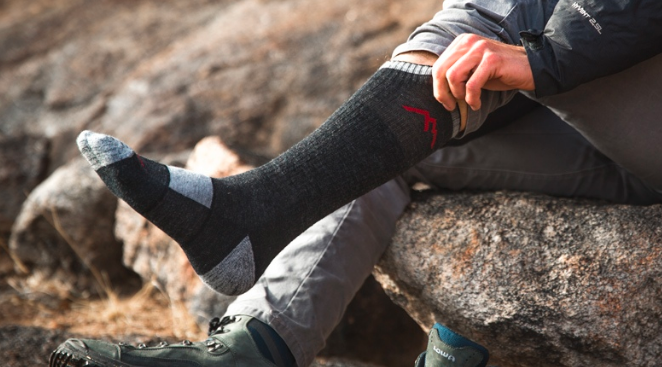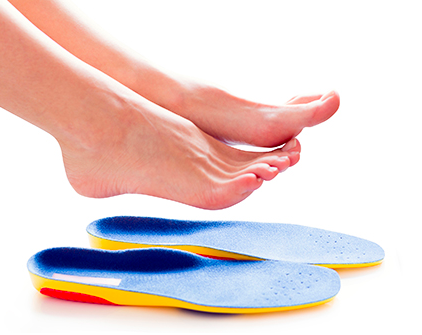If you’re working in a tough environment, dealing with heavy machinery, steel toe boots are the must-have tools. Investing in the steel toe boot minimizes the risk of fall hazards and increases your safety and lets you work confidently.
However, the question is, Can Steel Toe Boots Cause Foot Problems? Can it harm instead of helping? This might sound weird as it is supposed to protect your feet, why would it cause problems then?
If you cannot pick the right pair of steel-toe boots, you may face sore feet, aches, chafing, blisters and more. Now, here in this article, we’re going to discuss the problems you’ll face with the wrong pair of steel toe boots.
Overview of Steel Toe Boots
Among so many types of work boots, steel toe boots are the most popular and widely used ones. Steel toed work boots are also familiar as safety boots or boots with steel caps. The reason behind its popularity is its protective toe box construction that protects your foot from compression/falling hazards.
These types of boots are common in the manufacturing and construction industry as safety precautions for employees. If you work on sites, dealing with heavy construction machinery, you’ll need protective boots for safety compliance. And, a good pair of breathable Work Boots with steel toe cap will keep you both cool and safe.
Can Steel Toe Boots Cause Foot Problems?
Steel toe boot or safety boot is supposed to protect your feet, not to cause problems. They have high-quality materials in the construction that make them durable and long-lasting compared to other working boots. You can protect your leg from potential foot injuries using these boots.
The problem occurs when you pick the wrong pair, such as under-sized, oversized, wide feet with narrow boots. Below, we’ll show you the most common problem that you’ll encounter when selecting the wrong boots.
Chafing Problem
Chafing is a common skin problem that occurs due to excessive friction & irritation. When you buy steel toe boots smaller than they should be, uncomfortable friction becomes eminent. These boots come with steel plates near the instep area along with the toe.
The right size of this boot is comfortable, but the story changes when you get the under or oversized pair. The wrong size steel toed boot might put excess strain on your feet and cause chafing, discomfort, and foot pain. You may even encounter swelling and have difficulties standing on your feet.
Follow Carol DerSarkissian’s suggestions: give your feet time to heal, apply ointments, and get the right size boots.
Leg Sores
Safety shoes have thicker material in their build with heavy steel toe enclosures which makes them heavier than regular shoes. You’ll encounter leg soreness while wearing them for a long period because of their heavy weight.
It may even get worse if not treated when you get back home from work. Don’t worry, you can get rid of this pain just fine with proper foot exercise before & after a work time.
Foot Problems Arise from Tight Steel Toe Boots
Apart from chafing and foot soreness, there are some other foot problems that are common with tight steel toe boots. If your boot is tighter compared to your feet, some of the common problems that you’ll experience are:
Blisters
Excessive friction causes blisters. When you wear a tightly fitted steel toe boot, you’ll experience this problem. It’s a disturbing and annoying issue that can keep you from wearing boots anytime soon.
Calluses
With continuous pressure and friction from tight boots, the skin gets thickened. These thickened feet form into calluses and make you uncomfortable.
Corn
Corn is similar to calluses with a bundle of dead skin. Wearing a tight steel toe boot can cause this problem. You’ll face it on the upper and sides of your toes.
Neuromas
Neuromas, also known as Morton’s neuroma, is a painful condition that affects the frontal balls of your feet. When you wear tight steel toe boots, you’ll feel like you’re standing on the ground of sharp pebbles.
Takeaway
You might experience any or all of the problems above if you don’t select the right pair of steel toe boots. So put a bit more attention while selecting your boots to avoid these problems. Don’t expect steel toe shoes to stretch. Fit in prior. And don’t forget to give the boots and yourself the break-in period to adopt.
Foot Problems Arise From Loose Steel Toe Boots
Not only the tight steel toe boots cause problems, loose boots can do the same as well. Loosely fitted safety boots will cause unwanted twists and fold your feet inside the boot.
Even you’ll experience excessive friction with the rough parts of your boot that will cause chafing. Besides, since you cannot comfortably fit in, working on delegate projects becomes risky as you might lose control.
How to Make Steel Toe Boots Comfortable
We have portrayed a picture of possible outcomes from tight or lose steel toe boots. And for the question, Can Steel Toe Boots Cause Foot Problems? You have the answer now. So, it’s time to help you with how you can make your steel toe boot comfortable.
Pick the Right Size Boots
When the matter is about comfort, selecting the right size of shoes will do 99% of your job. Because the major reason behind discomfort and problem is the inappropriate boot size. Therefore, whenever you’re going to purchase your safety boots, take some time, give them a trial, and make sure they fit you well.
Remember, tight shoes will cramp your feet in the toe box, let alone the issues like chafing, blisters, neuromas, etc. On the other hand, the loose-fit shoe will create hot spots inside and might cause twisted ankles. Only the boots with nicely fitting and right size are the comfortable work boots you need.
Use the Right Socks
Most people don’t understand the necessity of wearing the right pair of socks with their working boots. They wear whatever they have around that ultimately causes discomfort. We’ll suggest you go for the right pair of socks that are specially built for work boots.
Moreover, the right pair of shocks is essential if you’re already experiencing blisters or sores on your feet. You should know that the built of work boot socks are not the same as regular socks. They have extra padding, more cushioning, and snug fitting which is crucial for making your boots comfortable.
Use the Right Insole
Generally, the insole that comes with the safety footwear is a bit smaller than the boot size. As a result, it is not possible to cover the whole inside area of the safety boots with that insole.
If you wear safety boots with short insoles for a long period, it may get uncomfortable for your feet. Therefore, it’s wise to invest in custom insoles for maximum comfort, especially if you have flat feet.
Use Bandage
The comfort is not only related to the work boots, you can also use bandages. If you’re feeling soreness or experiencing any corns or blisters, you can cover the problematic area with an antibacterial bandage. Then you can wear your work boots on top of that comfortably.
Conclusion
Now that you are at the end of this article, we believe you have the answer to this question, Can Steel Toe Boots Cause Foot Problems? If you completely read the article, then you know that both loose and tight steel toed boot mainly cause the problem.
Hence, if you have experienced any of these symptoms or issues, you probably got the wrong sizes of boots. It’s proven that the right sizes of boots matter the most. So spend more time while purchasing your work boot and make sure you get the right size for your feet.

